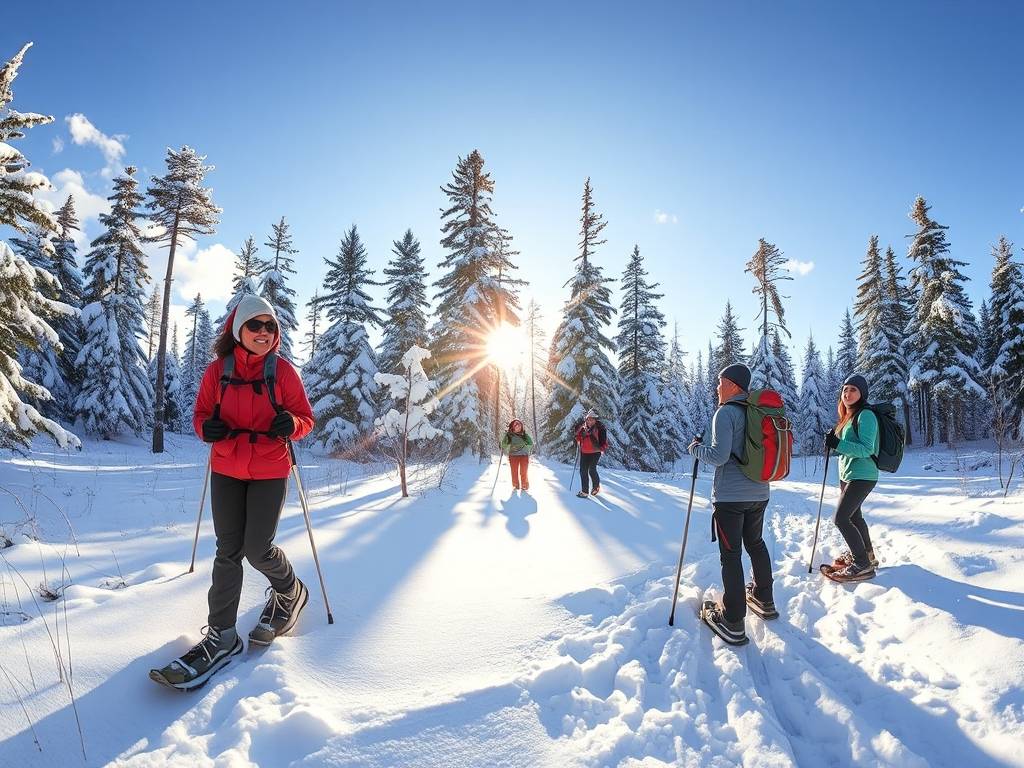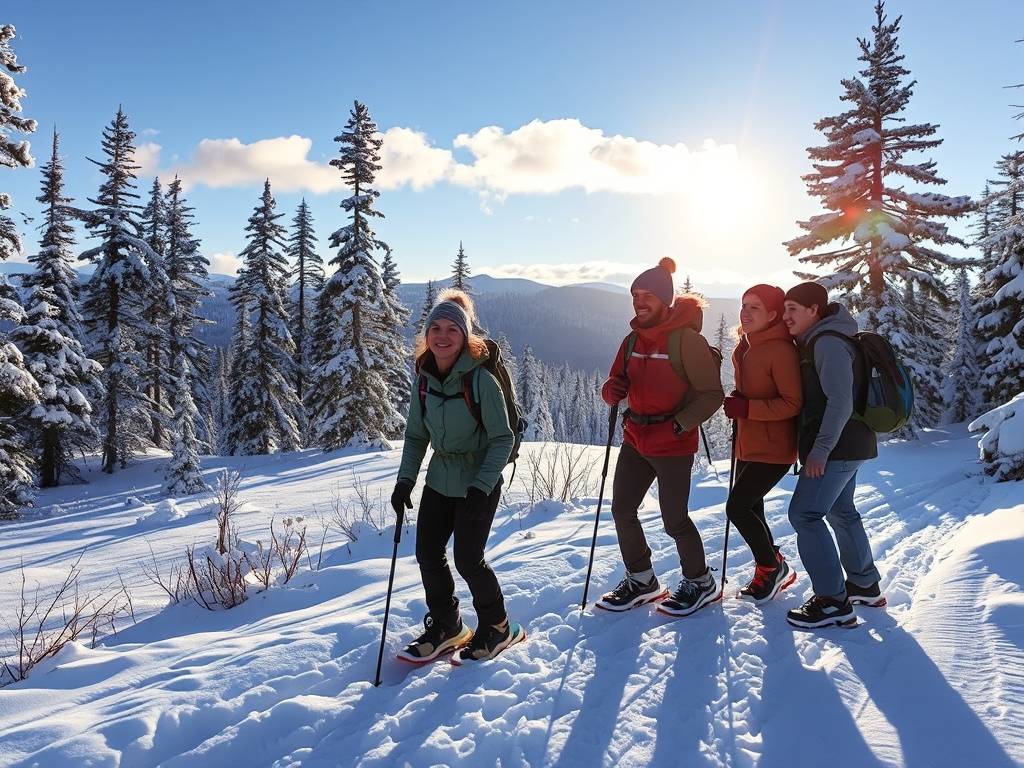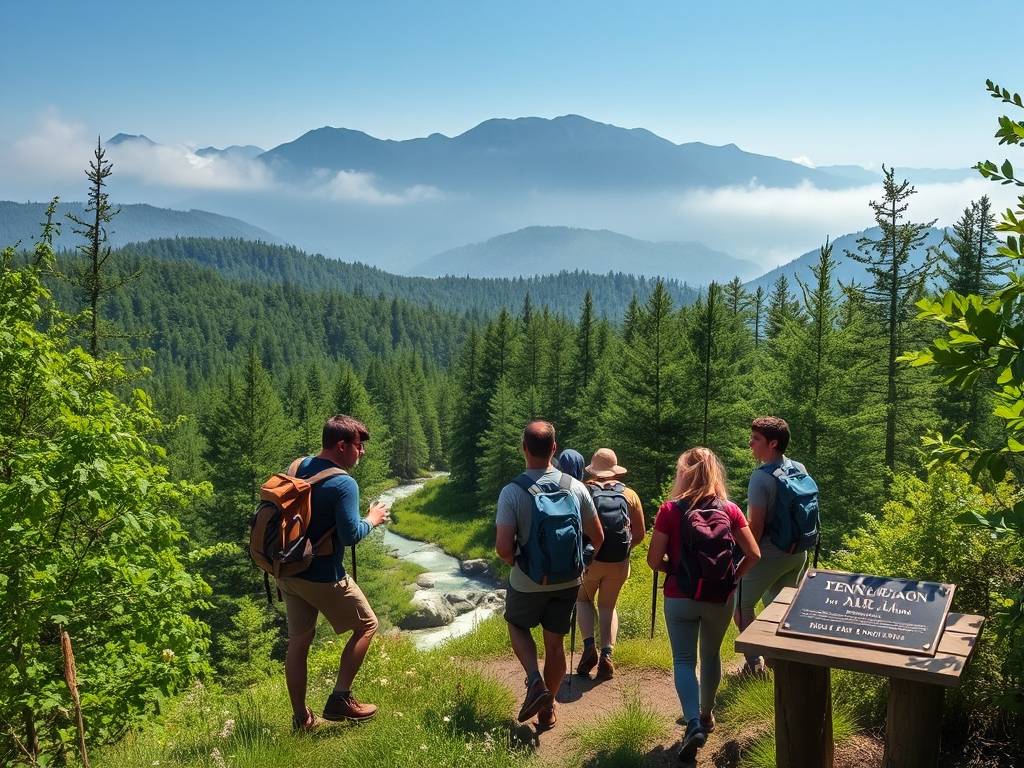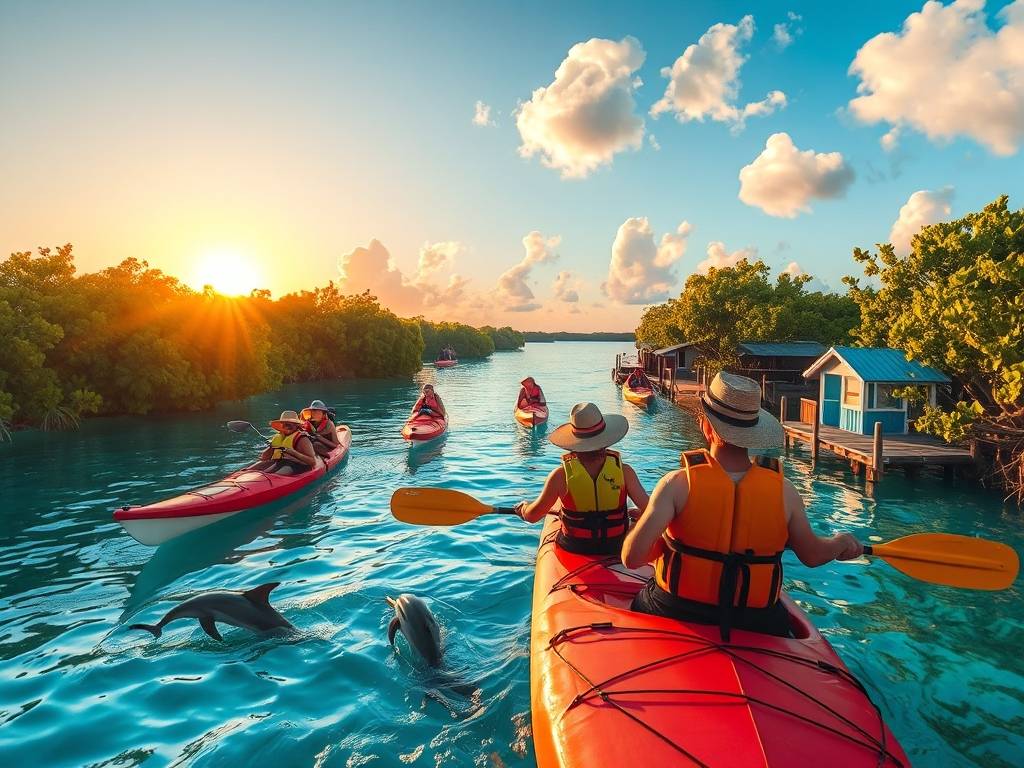USA Travel
US Travel: Snowshoeing in Maine’s Baxter State Park
Winter's Silent Symphony: A Snowshoeing Journey into the Heart of Baxter State Park
There's a special kind of quiet that only exists in the deep woods of Maine in winter. It’s not merely an absence of sound, but a presence—a thick, velvet hush that seems to absorb everything but the rhythmic crunch of your own footsteps. This is the magic that awaits when you trade your hiking boots for a pair of snowshoes and answer the call of Baxter State Park under a blanket of snow. For those seeking an authentic, challenging, and profoundly rewarding winter adventure in the United States, the snowshoeing trails of this vast wilderness offer an experience unlike any other.
Many travelers envision Maine for its rocky coastlines and summer lobster bakes, but the interior transforms into a pristine, snow-draped kingdom from December through March. Baxter State Park, a 200,000-acre gift to the people of Maine, becomes the ultimate stage for this transformation. The journey here is part of the adventure. As you leave the main highways, the world narrows to winding roads flanked by snowbanks, leading you to the park gates, where the rules change, and nature takes the lead.

Why Snowshoeing in Baxter is the Ultimate Winter Getaway
You might wonder, why snowshoeing? And why here? The answer lies in accessibility and immersion. While cross-country skiing requires specific trails and conditions, snowshoeing allows you to walk almost anywhere the snow is deep. In Baxter, this means you can explore beyond the designated paths, venturing into silent groves and along frozen streams. It’s the best way to experience the park's raw beauty while getting a fantastic full-body workout. The learning curve for snowshoeing for beginners is wonderfully gentle; if you can walk, you can snowshoe. The key is to start with the right gear—modern, lightweight aluminum frames with aggressive crampons that grip into icy slopes—making your first foray into winter hiking both safe and enjoyable.
The primary goal for many is the view of Mount Katahdin, the northern terminus of the Appalachian Trail. In summer, its rocky spine is crowded with hikers. In winter, it stands in majestic, silent isolation, a stark monochrome sculpture against the pale sky. While a winter ascent of Katahdin itself is a serious mountaineering endeavor reserved for experts, snowshoeing the lower valleys and surrounding peaks provides breathtaking, uninterrupted views of the mountain without the extreme risk. This is one of the most spectacular and safe ways to witness Maine's highest peak in its winter glory.
Planning Your Snowshoe Adventure: A Practical Guide
A successful trip to Baxter in winter hinges on preparation. This is not a spontaneous day-out; it's an expedition into a wilderness with limited services.
-
Reservations are Essential: The park limits the number of daily vehicle entries, especially in winter. You must make a reservation online well in advance. The roads are meticulously maintained by park staff, but they are narrow and snow-covered, requiring cautious, slow driving. Reaching the most popular trailheads like the one at Togue Pond Gate requires an early start.
-
Gearing Up for Winter Conditions: Dressing in moisture-wicking layers is non-negotiable. A synthetic base layer, an insulating mid-layer like fleece, and a waterproof, breathable outer shell will keep you comfortable. Never wear cotton, as it retains moisture and can lead to hypothermia. Your pack should always include extra layers, high-energy snacks, plenty of water (insulated to keep it from freezing), a headlamp, a trail map, a first-aid kit, and emergency supplies like a bivvy sack. For your winter hiking footwear, insulated waterproof boots are a must.
-
Choosing Your Trail: Your skill level should dictate your route.
- For Beginners & Families: The flat and scenic trails around Daicey Pond or the Kidney Pond area are perfect. The views of Katahdin across the frozen pond are iconic, and the terrain is manageable, offering a fantastic introduction to winter exploration.
- For Intermediate Snowshoers: The trail to South Turner Mountain offers a more strenuous climb but rewards you with one of the most stunning panoramic views in the park, looking directly into the heart of the Katahdin massif. The Howe Brook Trail leads you to beautiful frozen waterfalls, a magical sight in the deep freeze.
- For the Experienced: The journey to Chimney Pond is a classic. It’s a demanding 6.4-mile round trip with significant elevation gain, ending in a cirque surrounded by Katahdin's mighty peaks. This is a full-day commitment and should only be attempted by those with winter camping experience or the fitness to complete it before dark.
The Magic on the Trail: More Than Just a Walk
Once you’re on the trail, a new world opens up. The forest, leafless and stark, allows for long sightlines. You’ll notice things you'd miss in the bustling summer: the intricate tracks of a snowshoe hare, the delicate script of a fox's trail, or the powerful imprints of a moose. This is one of the key benefits of winter wildlife viewing; the snow tells the stories of the forest's inhabitants.
The sound of your snowshoes is a meditative rhythm. Crunch, swish, crunch, swish. It’s a sound that syncs with your heartbeat, forcing a slower pace that encourages observation and connection. You’ll stop more often—not just to catch your breath, but to simply listen to the profound silence. You might hear the groan of a tree limb heavy with snow or the distant call of a raven. This is where the mental health benefits of snowshoeing truly shine; it’s a moving meditation in a cathedral of pine and snow.
Reaching a vantage point, like the summit of a lesser peak, is a moment of pure triumph. You peel off a layer, take a sip of warm tea, and look out over a sea of white-capped peaks and frozen lakes. There are no crowds, no noise. It’s a view you've earned, and it feels entirely your own. This feeling of solitude and accomplishment is the core of the Baxter State Park winter experience.
Respecting the Wilderness: Safety and Etiquette

Baxter is a true wilderness, and in winter, its power is magnified. Weather can change in an instant, with clear skies giving way to blinding snowstorms and plummeting temperatures. Always check the park’s weather forecast the night before and the morning of your trip. Tell someone your planned route and expected return time.
The principle of "Leave No Trace" is paramount. Pack out everything you pack in. The frozen landscape is fragile. It’s also a shared home. Respect the wildlife by observing from a distance. If you are lucky enough to see a moose or a Canada lynx, consider it a privilege, not an opportunity for a close-up photo.
As the day wanes and the low winter sun casts long blue shadows across the snow, your return journey begins. The trek back feels different, your body tired but your spirit invigorated. The cold air begins to bite a little more, a reminder that night comes early. Arriving back at your car or your warm cabin feels like returning from another world.
Snowshoeing in Baxter State Park is more than a sport or a vacation activity; it’s a pilgrimage into the heart of a winter wilderness. It challenges your body, clears your mind, and fills your soul with a quiet, enduring awe. It’s an adventure that asks for preparation and respect but gives back a thousandfold in beauty, solitude, and the simple, profound joy of walking through a silent, snow-covered wood. So, this winter, look beyond the usual resorts and discover the raw, untamed magic waiting for you on the trails of Maine.
相关文章
- US Travel: Mountain Biking in Idaho’s Sun Valley
- US Travel: Camping by Michigan’s Lake Superior Shores
- US Travel: Climbing New Hampshire’s Mount Washington
- US Travel: Kayaking in Florida’s Keys
- US Travel: Hiking in Tennessee’s Great Smoky Mountains
- US Travel: Paddleboarding in Texas’s Lake Travis
- US Travel: Rafting in West Virginia’s New River Gorge
- US Travel: Canyoneering in Utah’s Zion National Park
- US Travel: Birding in Texas’s Rio Grande Valley
- US Travel: Camping in Oregon’s Crater Lake National Park
发表评论
评论列表
- 这篇文章还没有收到评论,赶紧来抢沙发吧~


